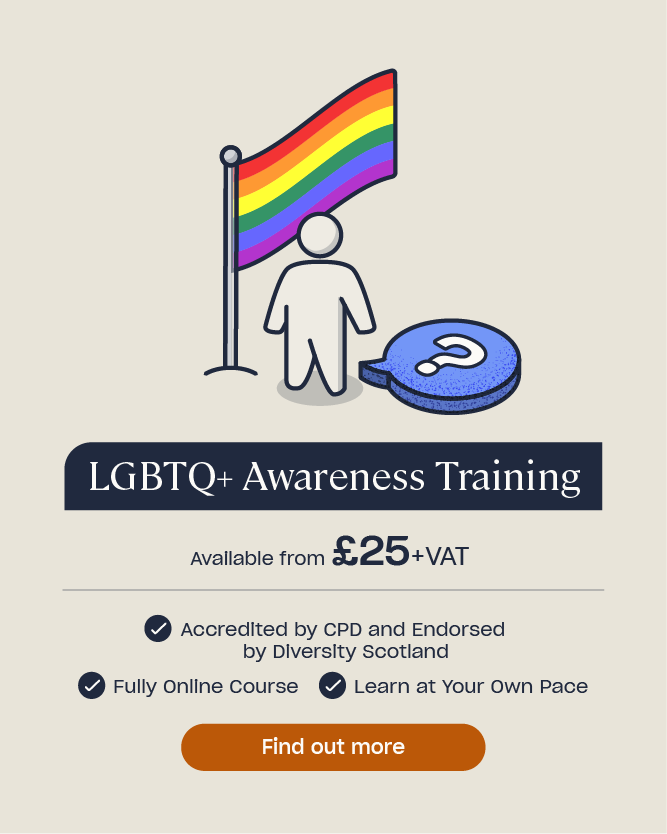Supporting Transgender Students in School: Guidance for Teachers
As a teacher or member of staff in an education setting, you have a responsibility to ensure that your students feel safe whilst at school. This doesn’t just refer to their safety in a physical sense, but also their psychological safety. It means having an understanding of students’ differences so that you can support those who need it and encourage acceptance amongst other pupils. In this article, we’ll look at one of those potential differences – a transgender identity – and explain what it means and how to support transgender students in your setting.

What Does Transgender Mean?
Giving a definition to the term ‘transgender’ can be tricky, as it can mean different things to different people. The dictionary definition of a person who identifies as transgender is someone whose gender identity doesn’t match the sex they were assigned at birth – however, it typically isn’t that straightforward.
For some people, being transgender or ‘trans’ means they want to undergo or have undergone surgery or medical intervention to change their appearance. For example, to add or remove breast tissue or alter the male/female hormone levels in their body. For others, their trans identity is expressed by the way they dress or behave, and isn’t dependent on their bodily appearance. For example, they might wear clothing associated with the opposite gender, use alternative pronouns or change their name.
For children and young people, having a trans identity can be an incredibly difficult part of growing up. Some children may be confident in their identity and outwardly show who they are, whereas others may be unsure, confused or questioning their trans identity. No matter which category they fall into, all students deserve to be treated with respect, and this is where teachers play an important role in supporting transgender students.
Transgender Guidance for Schools
Schools and other educational settings play a vital role in supporting all students, but in particular transgender students. The experiences a person has at school will shape them for life, so it’s essential that they are supported, valued and celebrated in these formative years. As a teacher, you want your students to thrive, no matter who they are.

How to Support Transgender Students
As a teacher, you can help support transgender students by doing any of the following actions. Which of these do you do already and where can you make improvements?
- Accept that trans pupils may exist in your school. This is often the first hurdle for many LGBTQ+ people who feel that their identity is being questioned, ignored or denied by society – and this attitude can be extremely damaging to their mental health. Instead, welcome and celebrate students’ differences, on an individual level and as a whole school, and be open to anything.
- If a student comes out as trans, then support their decision. Be positive about it, respond with kindness and listen to them carefully. Avoid being quick to judge, ask personal questions or deny their feelings. Instead, celebrate them for being true to themselves and look at what you can do to be more inclusive. It’s also important that you treat information like this with care and confidentiality – coming out as trans is a sensitive issue and deserves to be handled as such.
- Ensure your anti-bullying policy references trans and LGBTQ+ students specifically to show that bullying, harassment and discrimination based on gender identity or sexuality will not be tolerated. A zero-tolerance approach is essential and there should be no exceptions.
- Challenge transphobia in your school. If you hear someone – whether it’s another teacher or a student – using harmful language about another student’s gender identity, then challenge them, don’t just ignore it. Point out why their language or behaviour is transphobic and explain how it’s harmful. Everyone deserves to be treated with respect.
- Educate yourself about trans issues. If you’ve never come across a transgender person before, it can be difficult to understand or relate to what it means and to the struggles they face. To be supportive, however, it’s essential that you have this knowledge, so seek out articles online, read up about trans culture and do what you can to be an ally for those who need it. Stonewall – a UK LGBTQ+ charity – has many resources available for teachers that can help you learn more. Our LGBTQ+ Awareness Training Course can also give you a deeper understanding.
- Make talking about trans and LGBTQ+ issues part of the school RSHE curriculum and ensure you reference all sexualities and identities in conversations. Discussing the topic openly and positively will make everyone more accepting and can be incredibly comforting for any student who is quietly questioning their gender identity. When talking about gender or sexuality issues, remember to use inclusive language and never make generalisations or assumptions.
- Remain in open conversation with parents. As well as promoting diversity and inclusion amongst pupils, you should also extend this attitude towards their parents and guardians. Ensure your communications with family members are always inclusive and non-discriminatory, with the same zero-tolerance approach to transphobic behaviour and language. Furthermore, recent Government guidance states that parents should be informed if their child has expressed a wish to change their gender identity at school, so bear this in mind and always act in the best interests of the child in question.
- Introduce gender-neutral facilities at school. For example, instead of only having male and female bathrooms or changing rooms, create at least one facility that can be used by everyone. Whilst it can be important to have single-sex spaces, it’s also vital that trans students are able to use the facility in which they feel most comfortable. If your school decides to do this, then make sure all students are educated about it.
- Promote inclusivity everywhere. All students deserve to feel included and valued at school, no matter who they are and how they identify. Being included is powerful for trans students, especially if they’re not openly trans, because it shows them that they belong and gives them a valuable sense of psychological safety. Ensure that all lessons, activities and field trips are open to and include everyone.
- Stay up-to-date with the latest guidance and best practice for schools. As a teacher, you have a responsibility to safeguard children and ensure you’re following all procedures or guidelines laid down by the UK Government. This guidance is regularly reviewed, so ensure you’re familiar with the latest publications (such as the recently published consultation on gender-questioning children in schools).
- Create a school transgender policy. Having a clear-cut policy shows that you take the issue seriously and have procedures and best practices in place for everyone to follow. A transgender policy can answer a lot of questions for other members of staff as it gives them a central source of guidance for how to behave, how to meet the needs of transgender pupils and how to create and maintain a supportive environment.
Any of the above actions will help you to support transgender students in schools but the more of them you can do, the better. All students deserve to feel accepted, included and like they belong to their school, and teachers play a pivotal role in ensuring this. By celebrating students and their differences, you can make education a positive experience for trans students and have an extraordinary impact on the rest of their lives.
Further Resources
- How to Promote LGBTQ+ Inclusive Education in Schools
- What is Inclusive Practice?
- How to Promote Positive Mental Health in Schools
- How to Promote Equality, Diversity & Inclusion in the Classroom
- How to Create a Positive Learning Environment
- Gender Dysphoria in Children: Guidance for Parents and Teachers











